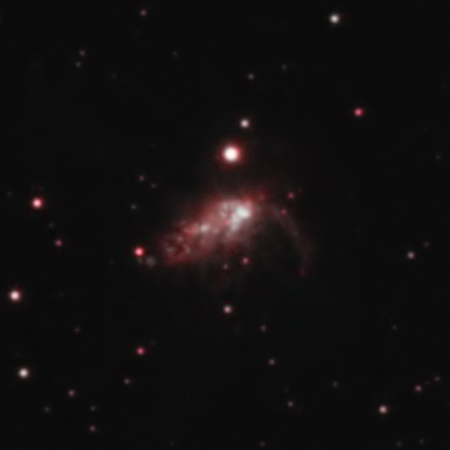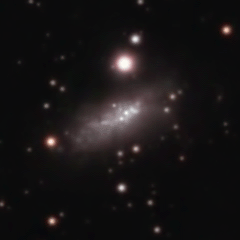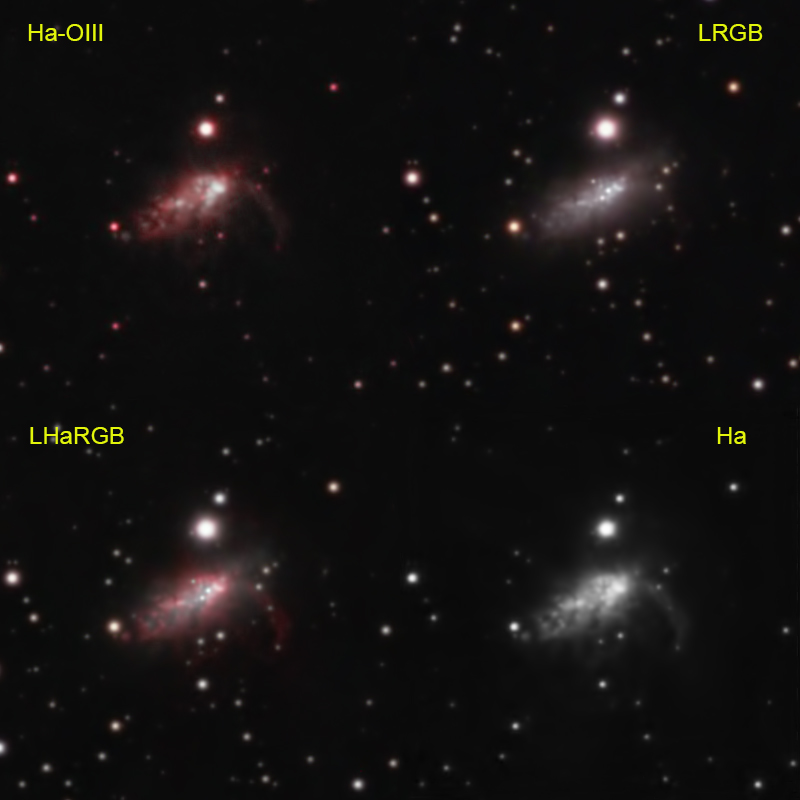Here's starburst nebula NGC 1569 in hydrogen (Ha) and oxygen (OIII)
this sat on my hard drive for a year as i was initially disappointed for 2 reasons:
1 there was little difference between the OIII and Ha at this resolution besides signal strength
2 the narrow band and LRGB (below) were so discordant, i couldn't imagine the combine working well. the Ha didn't enhance the image, it overwhelmed it.
here it is in LRGB:
when i finally combined the narrow and broad band images i was pleasantly surprised to see the sum adding up to more than the parts, even though some details of each were lost in the combination.
the combined image gives the classic appearance of stars clearing out and illuminating the surrounding hydrogen:
in this case the two bright "stars" appearing to illuminate the surrounding nebula are unresolved globular clusters containing thousands of stars (anyone fooled?), making this dwarf galaxy the largest "nebula" i've ever imaged
here's an interesting slow motion blink of the two images
some structures disappear, others appear, and others seem to move (lower left) as if being illuminated by a nearby source:
lastly here's an annotated mosaic:
more details on dwarf galaxy ngc 1569 at this site including observations of the "elephant's trunk" to the right
hubble image resolving the star clusters and more details at wikipedia
interestingly, the galaxy is blue-shifted, which means it's moving towards us, rather than moving away with the expansion of the universe.
thanks to rick johnson for pointing out this galaxy with it's extreme narrow band emissions.
image details:
8" LX200R, SX Trius 694 binned x2 to 0.8"/px,
astrodon 5nm Ha, 3nm OIII, LRGB E SERIES GEN-II
ASA DDM60
L 472x1 minute, 24x3 minutes, R 64x3 minutes, G 59x3 minutes, B 55x3 minutes (RGB included in luminance)
Ha 25x20 minutes, OIII 11x20 minutes.
1/29/16-2/8/16, bortle white skies
eastbluff, CA
Try increasing gamma if dark sections aren't distinguished
Thursday, May 11, 2017
Sunday, March 19, 2017
Abell 30, the born again nebula
March has been a difficult month for me in recent years,
a number of events have prevented me from completing this project, but finally,
here is my image of Abell 30, a rare "born again" planetary nebula who's central star re-ignited after turning into a white dwarf,
creating a new system of complex knots of oxygen (blue-green)
inside a mature spherical shell of hydrogen (red) and oxygen:
a number of events have prevented me from completing this project, but finally,
here is my image of Abell 30, a rare "born again" planetary nebula who's central star re-ignited after turning into a white dwarf,
creating a new system of complex knots of oxygen (blue-green)
inside a mature spherical shell of hydrogen (red) and oxygen:
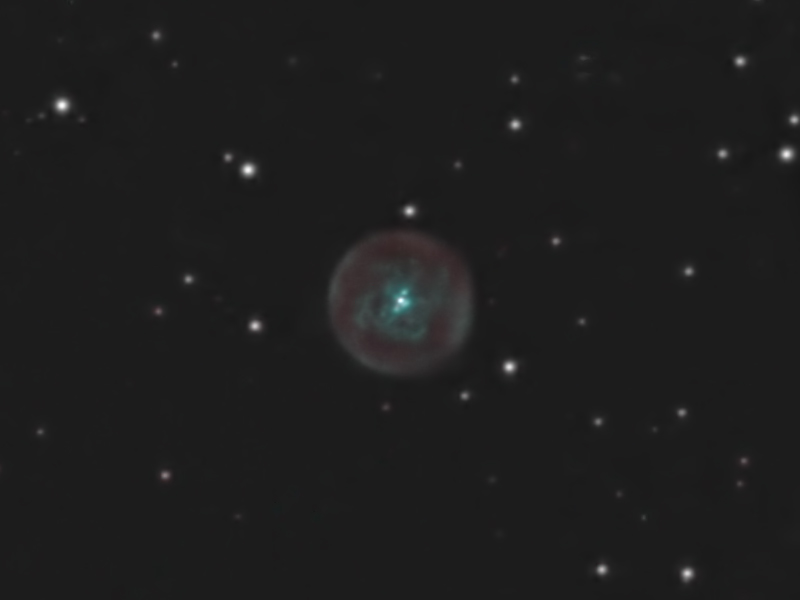 |
| Abell 30 in Hydrogen (red) and Oxygen (blue-green) |
The O III signal was faint, Ha signal extremely faint, and He II almost nonexistent.
I was baffled by sources stating that the knots have strong He II emissions, e.g.,
Osterbrock's Astrophysics of Gaseous Nebulae and Active Galactic Nuclei p. 264.
My He II filter is spec'd at 468.6 nm with a 4 nm band width detects almost no signal in the outer shell, but did detect signal in the small knots closest to the central star. My best guess is that "helium rich" refers to the relative ratio of He II to Ha in specific areas of the nebula. Here's a mosaic of images with the various filters displayed using the linear stretch that best displayed the central knots. The continuum filter removes the narrowband emissions of the nebula, showing only stars in this case:
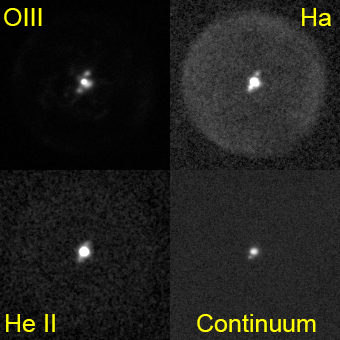 |
| Abell 30 |
Edited the section above (a filter wheel error on my initial attempt substituted a continuum filter for the Helium II filter).
A few findings regarding exposure variation and binning:
for OIII 3 nm
40 min binned 2x not much deeper than 20 min binned 2x, if at all.
but
20 min binned 4x (4 subs) much deeper than 40 min binned 2x (2 subs)
though it was difficult to be sure conditions were identical.
filter band width:
for 40 min binned 2x 3 nm OIII deeper than 5 nm or 8.5 nm; not much difference between latter two
older unbinned subs with my SX H9 (0.6"/px) were far worse than either, threw all subs out
8" LX200R, SX Trius 694 binned x2 to 0.8"/px, binned x4 to 1.6"/px, (final image at .8"/px)
astrodon 5nm Ha, 5nm, 3nm OIII, chroma 4 nm He, 540x50 nm filter (greenish continuum) ; custom scientifics 8.5 nm OIII
ASA DDM60
OIII 10x 20 min bx4, 28x 40 min bx2, 44x 20 min bx2
Ha 2x 20 min bx2, 15x 40 min bx2, 60 x 20 min bx4
HeII 36x 1200s bx4 2x2400s bx2!
continuum filter 13x2400s bx2 (in error, black point 30K ADU!)
2/16/13-3/6/17
eastbluff, CA
Subscribe to:
Posts (Atom)
